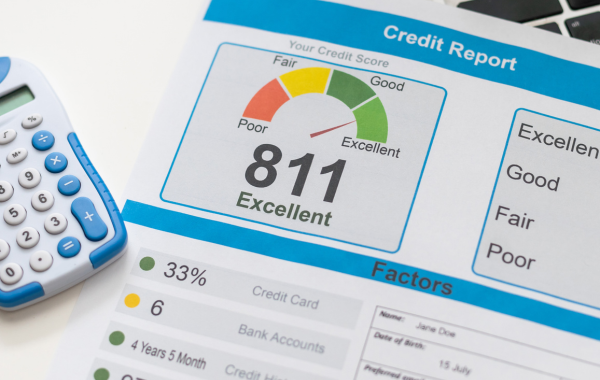
Researchers say 42% of Americans were denied financial products because of their credit score in the last year. That’s tens of millions of people who weren’t able to get a loan, take out a credit card, or achieve a financial goal.
You wouldn’t be alone in wondering why one simple score plays such an important role in our financial system. That’s why we’re sharing this credit score 101 guide. It covers everything you need to know about credit scores so you can protect yours moving forward.
Your credit score is a number on the credit score scale, which ranges from 300 to 850 and is designed to predict your future credit behavior. When you want to take out a loan or open a credit card, a financial institution can look at your credit score to see how likely you are to pay back the funds it lends you.
When your score is closer to 850, it’s typically easier to borrow money because lenders view you as a low-risk borrower. But when your score is closer to 300, you may have a hard time borrowing any money at all, as lenders may decide that you’re unlikely to pay whatever you borrow back. To put this into perspective, the average credit score is about 718, though the average credit score by age can vary.
This is why it’s important to work toward the highest credit score you can. When you do, you have more financial options at your disposal to pursue your goals.
Although a credit score is written as a single number, it’s made up of several different metrics. Your financial habits across these metrics can each have an impact on your overall score.
However, calculating your credit score isn’t as simple as adding up all of the metrics that contribute to it. Credit reporting bureaus like TransUnion and Equifax have proprietary scoring models they use, which are based on the following factors, among others.
Payment History (35%): Your payment history reflects how consistently you meet payment deadlines. Each payment is meticulously tracked, and late payments, whether by 30, 60, or 90 days, can significantly lower your score.
Outstanding Debt and Credit Utilization (30%): Your total outstanding debt contributes to this aspect, intertwined with your credit utilization rate.
For example, if you have a $1,000 credit limit and are using $990 of it, your score will likely be lower than it would be if you were only using $100 of it. The good news about outstanding debt is that it’s one of the more straightforward aspects of a bad credit score to fix. You can do so and work toward a fair credit score simply by paying down your debt. Lowering debt and managing credit usage positively influence your credit score.
Length of Credit History (15%): The number of years you’ve held various credit accounts is considered. A longer credit history provides context for factors like payment history, indicating stability to potential creditors.
Pursuit of New Credit (10%): This is because excessive applications for credit can be a sign of financial challenges (even if that’s not true in all cases).
When you apply for credit, it stays on your report for two years. This is why it’s important to think carefully before submitting an official application for a credit card or loan.
Types of Credit Owned (10%): Diversifying the types of credit accounts you manage is beneficial. A mix of credit cards, mortgage loans, and auto loans demonstrates your ability to handle various credit responsibilities.
However, you don’t want to start filling out more credit applications and opening new lines of credit blindly, as doing so can harm your credit in other ways. It may be helpful to work with a credit expert if you’re interested in learning about how to work from poor to excellent credit through this metric.
Now that you know what a credit score is and how it’s calculated, you may be motivated to protect and improve your score. There are several ways to do that, including each of the following:
It can also be helpful to use our Credit Insight Tools. These give you a real-time look at your performance in each category that makes up your credit score. That way, you can identify your biggest opportunities for improvement and take advantage of them.
Whether you want to open a new business credit card or are preparing to pay new student loans, your credit score can have a big impact on your financial future. That’s why it’s important to look after your financial well-being.
Fidelity Bank can help you do that. We offer a variety of financial services and tools you can use to get more insight into your credit. Our team of experts is standing by to help you take advantage of them. So why wait? Schedule an appointment with a banker today to learn more about how we can help.
Routing # 211370707 | NMLS # 452347 | Phone: 800.581.5363
©2025 Fidelity Bank. All Rights Reserved Privacy | Online Privacy Notice | Terms of Use

